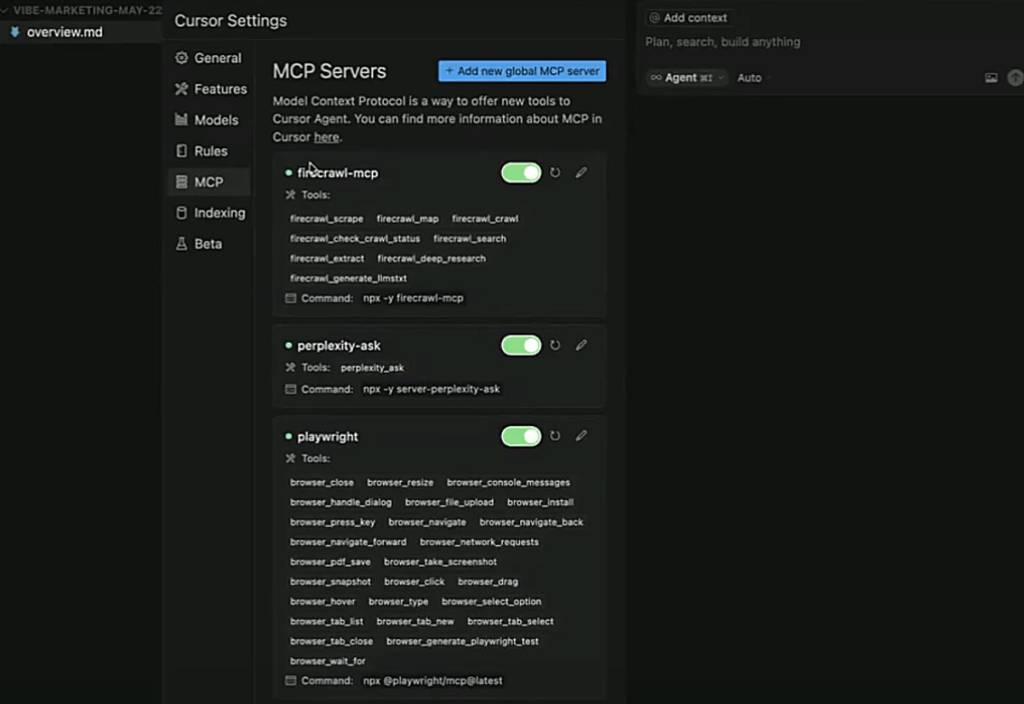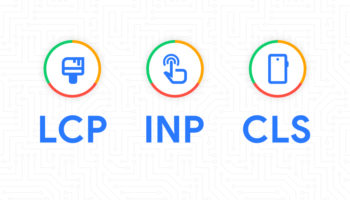Okay, so here’s something that blew my mind recently. You know those AI coding tools like Cursor and Windsurf that all the developers are raving about? Well, turns out they’re not just for writing code. I’ve been experimenting with them for SEO work, and honestly, it’s been a game-changer.
Let me walk you through what I’ve discovered and how you can use these tools to absolutely crush your SEO game.
What is MCP and Why Should You Care?
First things first – let’s talk about MCP, which stands for Model Context Protocol. I know, I know, another acronym to remember. But stick with me here because this is actually pretty cool.
Think of MCP as basically an API for AI systems. It’s like giving your AI assistant superpowers to connect with different data sources and tools. Instead of just chatting back and forth, your AI can now tap into your analytics, your CMS, your SEO tools – everything. It’s like having a really smart intern who can access all your systems at once.
Anthropic created this as an open standard, which means it’s not locked into one company or tool. Pretty neat, right?
Setting Up MCP in Cursor (Don’t Worry, It’s Not That Hard)

Before we dive into the fun SEO stuff, you’ll need to get MCP working in Cursor. Here’s what you’re looking at:
- Installing MCP Servers – These are basically the connectors that let Cursor talk to your external tools. Think of them as translators between Cursor and your other systems.
- Configuration – You’ll need to set up authentication and permissions. This part can be a bit tedious, but it’s worth it.
- Testing Everything – Make sure your AI can actually access what it needs to access. Trust me, test this thoroughly before you start building anything fancy.
Some popular MCPs I’ve been playing with include Firecrawl (great for crawling sites) and Playwright (creates a headless browser). These have been absolute lifesavers for my SEO work.
Creating Content That Actually Converts
Here’s where things get really interesting. With MCP set up, Cursor isn’t just writing content in a vacuum anymore. It’s pulling real data and making informed decisions.
My Content Creation Workflow Now
Instead of guessing what to write about, I can now have the AI:
- Pull performance data from my analytics to see what topics are actually working
- Research competitors by analyzing their content structures and finding gaps I can exploit
- Integrate keywords naturally by connecting directly to my SEO tools
- Create variations for different audience segments without starting from scratch
The difference is night and day. I’m not getting generic fluff anymore – I’m getting content that’s informed by real data and strategic thinking.
Internal Linking Just Got Ridiculously Easy
This is probably my favorite discovery. Internal linking used to be such a pain – you’d have to manually comb through hundreds of articles to find linking opportunities. Now? The AI does it for me.
How It Works
Through MCP, Cursor can analyze my entire content database and spot internal linking opportunities that I would never catch manually. It understands how my articles relate to each other thematically, suggests anchor text that sounds natural, and makes sure I’m not over-optimizing anything.
What I love about this:
- It maps out relationships between all my content
- Suggests varied, natural anchor text
- Identifies high-value pages that need more internal links
- Finds orphaned content that’s not getting any love
It’s like having someone who’s read every single piece of content on my site and remembers it all perfectly.
Building Custom SEO Tools (This Is Where It Gets Fun)
The real magic happens when you start building your own micro-tools. These aren’t generic SEO utilities – they’re custom solutions that understand your specific setup and strategy.
Content Gap Analysis Tool
You can build a tool that connects to multiple data sources and finds content gaps I should be targeting. It looks at search queries that bring traffic but have high bounce rates, compares them to my existing content, and tells me exactly what to create next. It even prioritizes opportunities based on search volume and competition.
Technical SEO Monitor
This one’s been a lifesaver. I have a real-time monitoring system that connects to my site crawler, analytics, and Google Search Console. It catches crawl errors, analyzes Core Web Vitals, validates schema markup, and identifies stale content. But here’s the kicker, it prioritizes fixes based on their potential traffic impact, not just technical severity.
Competitive Intelligence Dashboard
I’m basically spying on my competitors now (legally, of course). The system tracks multiple competitor domains, watches for new content, monitors ranking changes, and tracks backlink gains. It’s like having a full-time competitive analyst who never sleeps.
The Bottom Line
Look, I’m not saying this stuff is easy to set up initially. There’s definitely a learning curve, and you’ll probably break things a few times (I know I did). But once you get it working, it’s like having a superpower.
The combination of AI IDEs with MCP is opening up possibilities I never thought were possible for SEO work. We’re not just writing better content, we’re building smarter systems that understand our entire digital ecosystem.
If you’re doing SEO work and haven’t explored these tools yet, you’re missing out on a huge opportunity. The learning curve is worth it, trust me.
What’s your experience been with AI tools for SEO? I’d love to hear what you’ve been experimenting with!
For more information, The Boring Marketing put out an amazing video that walks you through how to do everything mentioned above:





